[17 May: I've now made this idea into its own project]
[21 April]
I really should get to a MVP Tetent out of the door ASAP so that Reality(TM) can throw me under the bus ASAP and tell me why my solution doesn't work, even when mitigating as many possible negative scenarios as I can.
Why?
It seems I've passed the proverbial event horizon; I'm losing time if I work on Tetent, and losing time if not working on Tetent, simply because I'm thinking of it and wondering how I could make it better or adapt it for a new usecase.
In terms of making it better, yesterday I talked about the plan for the Tetent Taic, a photovoltaic variant of Tetent that replaces all the LCD screens. For possible usecases, today I'm thinking of a UMPC.
First, some history

I owned a GX1 Pro for... about a week, which I called Aeti (pronounced "Aey... Tee-yai") because of the powerful NVidia RTX GPU hype (eg 2080Ti, 3060Ti) and it was hopefully going to replace the second-hand Sharp HC-4100 (named A4100) that I wrote electronic notes on (instead of the little A7 booklets I was using previously, hence the whole "A" thing). Yes, the technological difference of Windows CE + 8MB of RAM + mono-LCD to Windows 10, a 1920x1200px truecolour screen, Thunderbolt 4 enabled, 4C8T, 16GB RAM device was very nice to think about.
Unfortunately, there were small issues that compounded into sending it back, namely that a) the WiFi connectivity was directional, b) the screen didn't bend 180 degrees (aka, to my face when held, but to my chest) and c) there was only 16GB of RAM.
This was in the time where I was struggling to obtain parts for #Teti [gd0022] and was faced with a decision: Wait it out, or sell off the components and double down on portability, skipping 16" laptops and going all the way down to this 7" device. While I returned it, I still loved the thing and the possiblities, though it doesn't look like OneNetbook is coming out with a second edition now that their hands are full with the OneXPlayer.
The idea
You know how I started building Teti "because I can't make a 2 in 1 laptop"? Well, a UMPC in a Tetent form factor could be even better than the laptop form factor for me.
I've been occasionally wondering if there was a solution where Tetrinsic was integrated into a traditional laptop, but this was before Tetent Concept3. The idea for the laptop was to have each half spring loaded (like a pen) and pop up out of the chassis to an ergonomic angle.
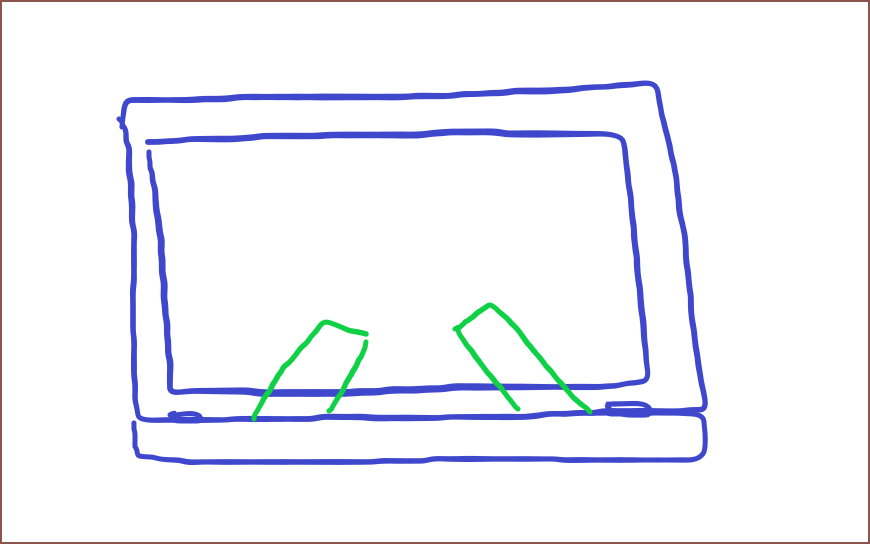
Now, the idea is to create something like #Tetent TwySize [gd0040] but using an x86 CPU.
Computing hardware
Framework motherboards now exist:
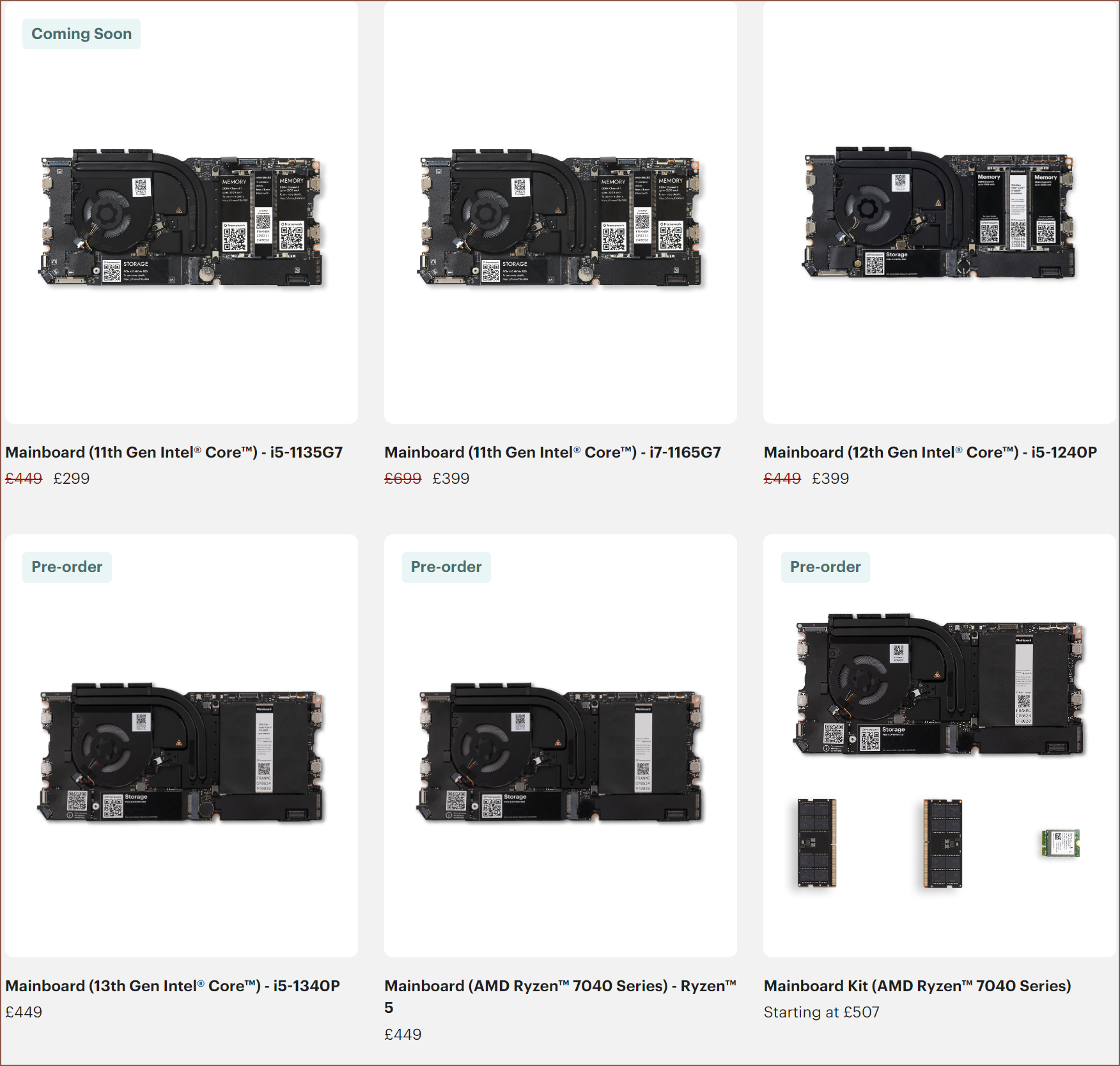
At this point, they're essentially a suite of (relatively) high performance single-board computers that seem to continuously get the latest chips.
When I was researching the GX1, I notieced that the 1135G7 and 1165G7 (the GX1 Pro has the similar 1160G7) were rather close in benchmarks, and that the former was the value buy, if given the option. Considering that I ended up upgrading from an 7500U 2C4T laptop (Deti) to a 11600K 6C12T desktop (Teti) and that desktop only feels 33% faster in general despite being 100% faster in single-core benchmarks, I'd still say that the £299 1135 is the better choice, especially considering the DDR4 to DDR5 price difference (see image below). A nice thing is that the 1135G7 can take up to 64GB of RAM, just like I've got 64GB in Teti! Many previous laptop chips seemed to max out at 16GB for some reason.
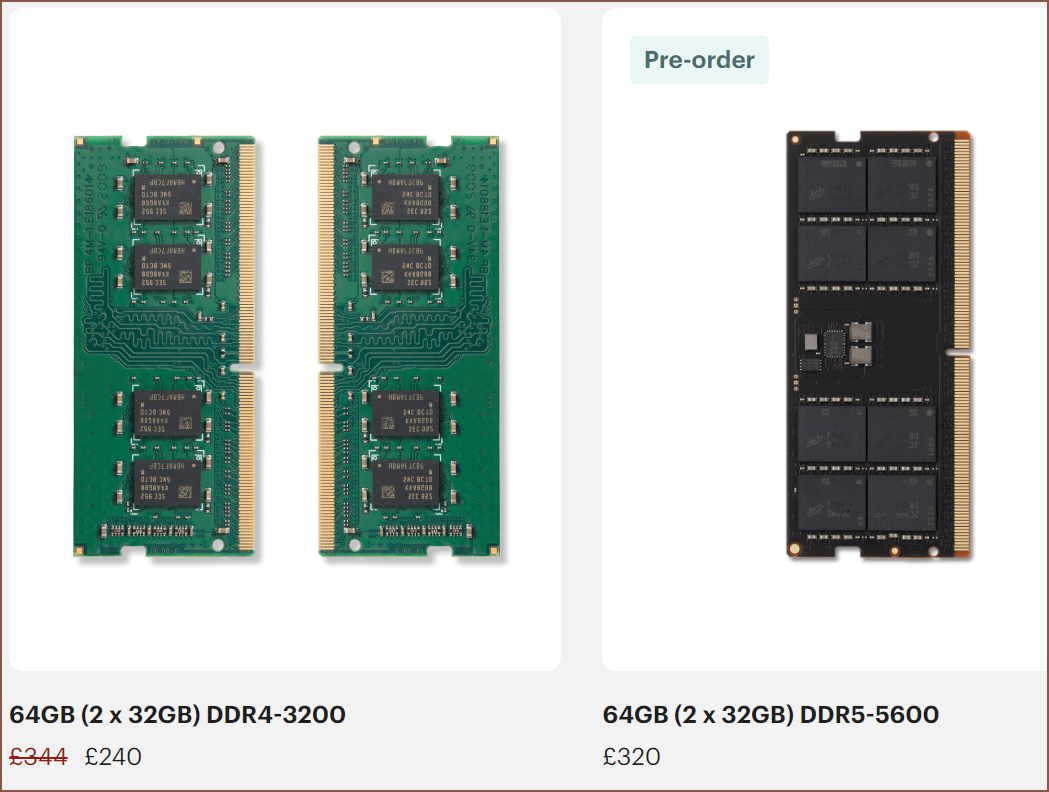
The price (and the difference) is much lower from 3rd party vendors:


Anyway, it's not exactly small though. It took a while to understand, but looking at the 2D schematic, the board is like 104 x 233mm, though a redditor has measured it and it's more like 114 x 233.
[Edit 5] It turns out that the listing itself has this information, and it's 233 x 112 x 6.8mm. [/E5]
[12 May: Edit 2] The other option that makes the most sense is AMD's brand new, hex-core 7640U, which can support up to 256GB for those... erm... gigapixel processing algorithms or something? The site says shipping late Q3, so I'll assume "sometime in October" which is early Q4.
Like I said, I uprgaded from a dual core 7500U to a hex-core 11600K, and there's actually not that many multithread applications I run (and if I do, the task is usually short anyway, like batch resizing 10 images). Rendering 1MP Fusion360 images is the most multithreaded thing I do. Thus, I recommend saving the £250 difference to the 7840U if just after the 2 additional cores. Looking at benchmarks, an 11600K and 7640U are effectively equivalent in performance.
The 7640U has 8 RDNA3 iGPU CU's and the 7840U has 12, and it does seem like they scale well from these fresh-off-the-press benchmarks (66% the CU's = 64% the performance).


[/Edit 2]
The screens
This is what I actually came here to talk about. I was going to start this log, mentioning that I'm planning to take into accout the possibility that somebody would want to have a dual-screen Tetent solution. The Toshiba chip has 2 I2C addresses, and many SBCs support dual monitors. I'd expect they'd use larger (albeit 60Hz) screens instead of the 2.9" square. It'll still be an exercise for the reader to actually design a UMPC / cyberdeck, but I was intrigued about possible components for such a solution.
After all my research, I've found 3 candidates:
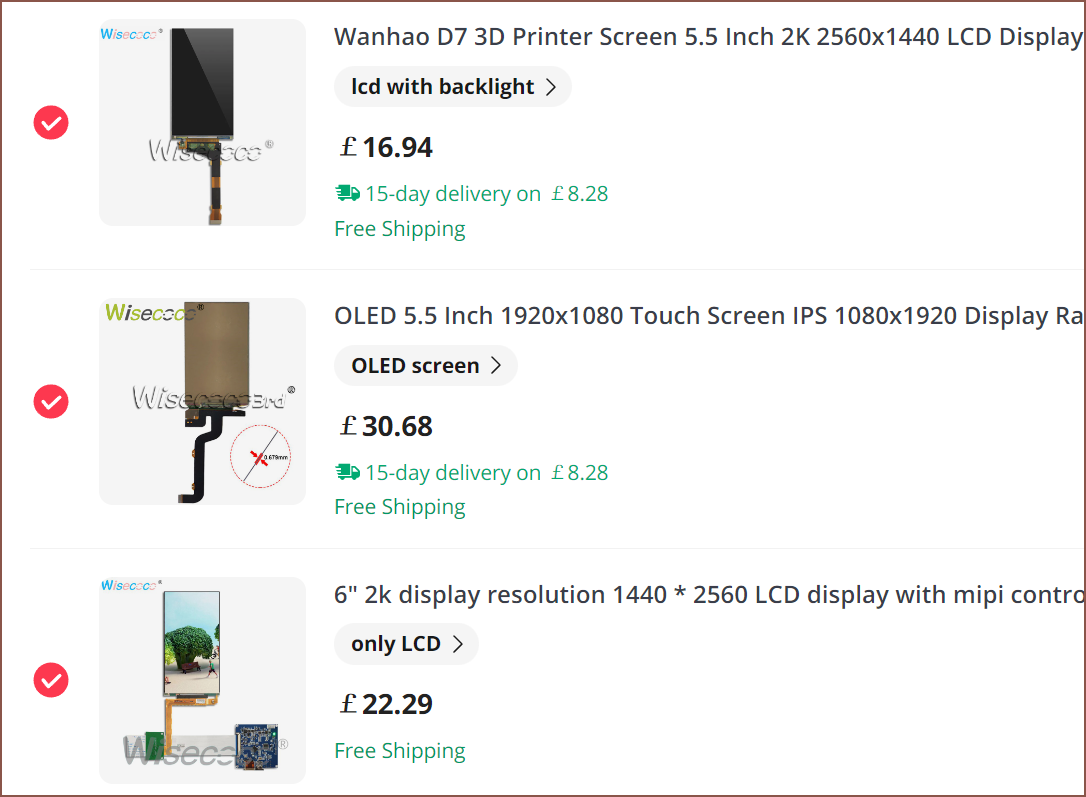
- LS055R1SX04
- 5.5" 1440p: 97.1 Pixels Per Degree (PPD) from 26cm
- IPS
- £17
- BB055FHM-T00-6P01 (guesstimate, since it's not mentioned in listings)
- 5.5" 1080p: 72.8 PPD
- OLED
- Touchscreen
- £31
- LS060R1SX02
- 6" 1440p: 89.3 PPD
- IPS
- £23
Like a normal 2-monitor setup, the idea is to have the screens side-by-side (to look like a 32:9 with a line in the middle), mounted on the speaker side. It swivels out 90 degrees (similar to how I rendered it for the #Tetent TwySize [gd0040]).
My 1st recommendation would be panel 2 as it's overall the best solution. The second one would be panel 3 for more screen real estate and text sharpness. Remember, Tetent is naturally held a few centimetres closer than a normal phone, and desktop OSes like Windows show more content than iOS / Android.
[15 May: Edit 3]
I've scanned Panellook... and found nothing, but I scanned my mental archive of AliExpress products and remembered another candidate, the H381DLN01.2 (not .0, which is maxed out at 100nits). It's a 3.81", 1080x1200px, 76.1 PPD, OLED, 90Hz panel that's £27.50 on Aliexpress, and the plan would be to have 4 in total as a kind of mini video wall. I didn't see this because I set my search query to min 250 nits on Panelook and this screen is 100 in their database, but the listings say that it can go up to 360 nits on some and 400 on others.
The benefits are that it's the only high refresh option, it's OLED, the active viewing area takes up most of the available vertical space, a low-poly curved monitor is possible and there shouldn't be any screen orientation issues.
The drawbacks is that there would now be 3 black bars across the active area, and it's near 2X the cost of the next most expensive option.
It's possible to see those black bars as a feature instead of a bug though if you see them as content seperators. All my productivity workflows -- other than Fusion360 -- would either fit just fine in a single 1080x1200 block of screen (e.g. MS Word), or has a resizable, window-in-window/panel user interface (e.g. Visual Studio) where I could just arrange the panels such that the digital boundary occurs at the physical boundary.
If I was going to make this UMPC, this is the option I'd try first since I'd 1) very much like to get out of this 60Hz lifestyle and 2) the low poly curved mini video wall sounds both cool and productive.
[16 May: Edit 4]
Perhaps, the best compromise would actually be a single, centered 5.5" OLED and dual 3.8" side panels.
- It's unlikely that someone would game with such relatively large bezels cutting though the scene:
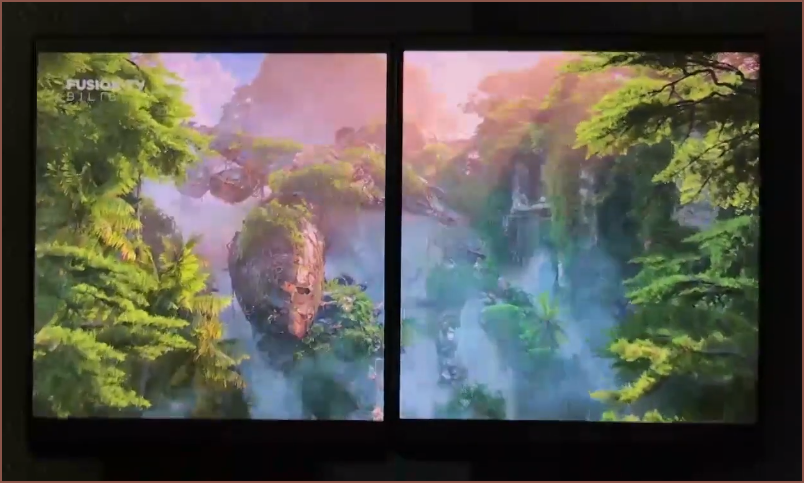
- The main reason I want high refresh are for moving-text situations, such as scrolling a research article / file explorer / AliExpress page. These are also situations well suited to be placed in a side panel screen.
- Due to the stubbornness of YouTube, 60fps is the top limit for video content. Thus, wether I'm creating or consuming content, 60Hz would be the most I'd need for a screen. That content will also be comfortably centered, instead of on the left or right half of the device.
- They're both OLED and of similar size (Vertical of 68.3mm center for the 5.5 and 72 for the 3.8), so the sizes of UI elements should only look slightly smaller on the side panels.
- 3 panels is cheaper than 4 (or 5, since 4 is £128 + 20% VAT, and 5 is £137 + 0% VAT due to the >£135 limit thing). Including VAT, it's £98.
- [Edit 5] Still, a 32G/2TB 7640U 2x1080x1200 + 1920x1080 OLED system would cost around £1,000, which is about the price I paid for the 16G/512GB 1160g7 1920x1200 IPS GX1 Pro.
[19 May: Edit 6]
I've just found out about the LS063R1SX01 for £34, which is a 6.3" 1440p IPS screen. It has a PPD of 85.3 and has a horizontal FOV of 30 degrees, which I found to be ideal from #T^2 TyMist [gd0138]. It can be configured with or without the backlight, so a possible sub-project could be a DIY local-dimming LCD. A pixel pitch of 2mm will result in 2730 local dimming zones, and probably could obtain true HDR and daylight-readable brightness levels.
Ok... is that all the screens?
No, actually! For the low low price of £99, you can actually get a 5.7" 1440p OLED for an inky black, 93.8 PPD experience! It seems to be the AMS567JD09, which has a PenTile instead of RGB, so I think the actual resolution would be around 1080p levels still.
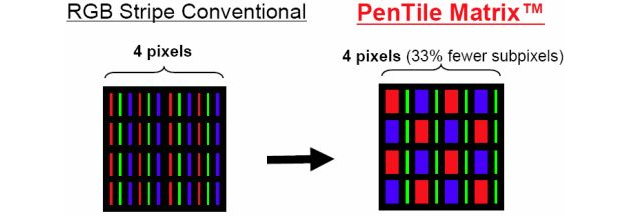
Wait... if PenTile is the reason why the blacks on my 2021 Realme Q3 Pro look blue-tinted in any sort of ambient light -- making it look worse than my 2012 PSVita -- I want to MAX avoid it; I do NOT consider that Q3 screen "OLED" as the ambient black looks only marginally darker than an IPS screen in most lighting conditions.

Places a drop of water on the screens of the Realme and PSVita to be able to see the sub-pixel layouts...

Now I've got to make sure that the 1080p OLED screen I found is RG/BG or RGB. This site seems to be a good resource for finding panels that I might actually be able to find on AliExpress.
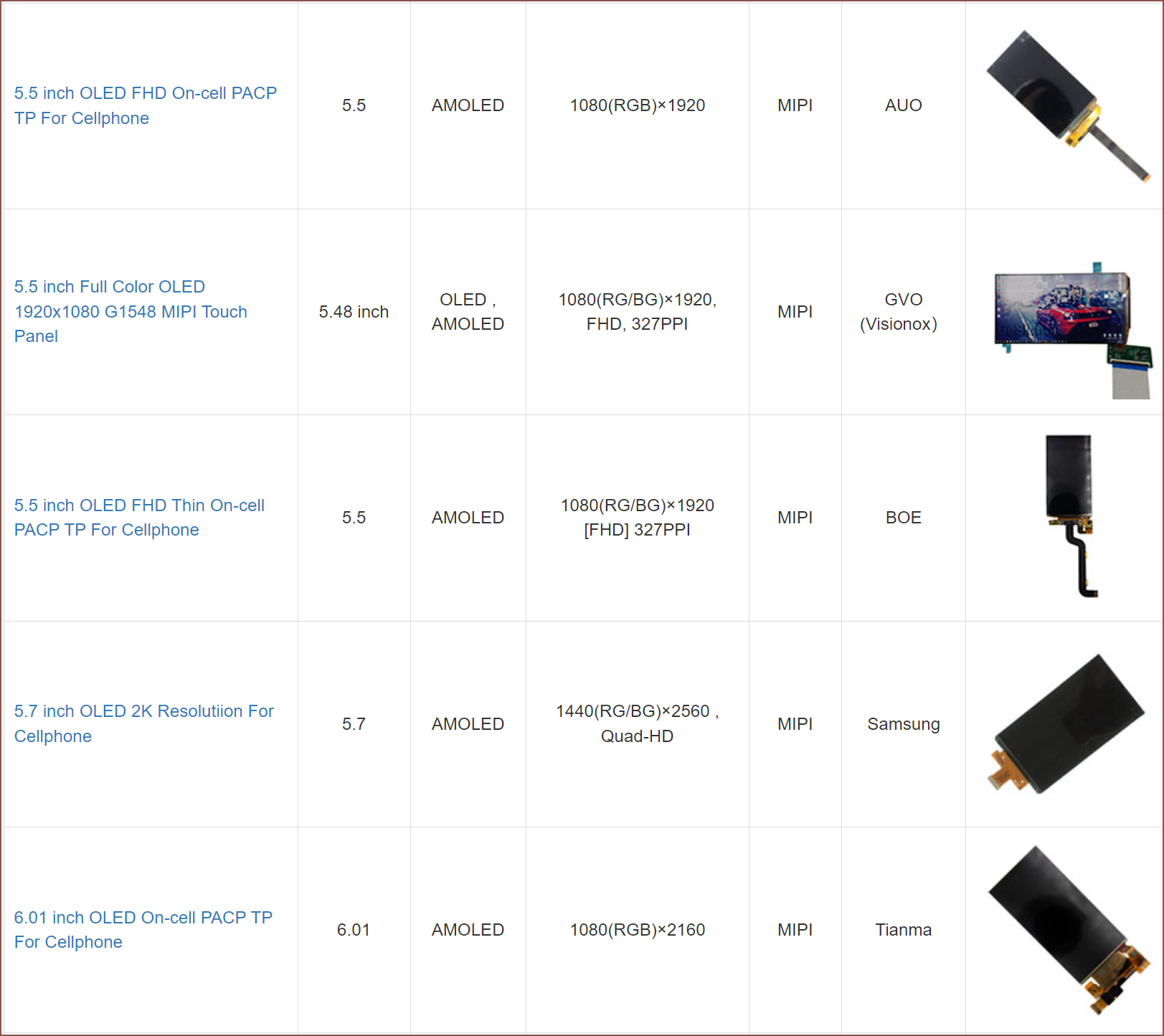
As you can see, the PenTile configuration is more common than RGB stripe when it comes to this size range. The AliExpress listings I found don't specify what the screen is, but the y have a squigly and bendy cable so it's probably RG/BG unfortunately.
That T601F2160OM-01 is something I'd really like! Have you seen my brand image? I will totally run the side screens at 1080x1080px if it meant that I could have a 1:1 / 2:1 / 1:1 screen setup. Unfortunately it seems out of stock at the moment:

It's not like any of the Framework mainboards I want are going to be in stock anytime soon either, so it's fine for now...
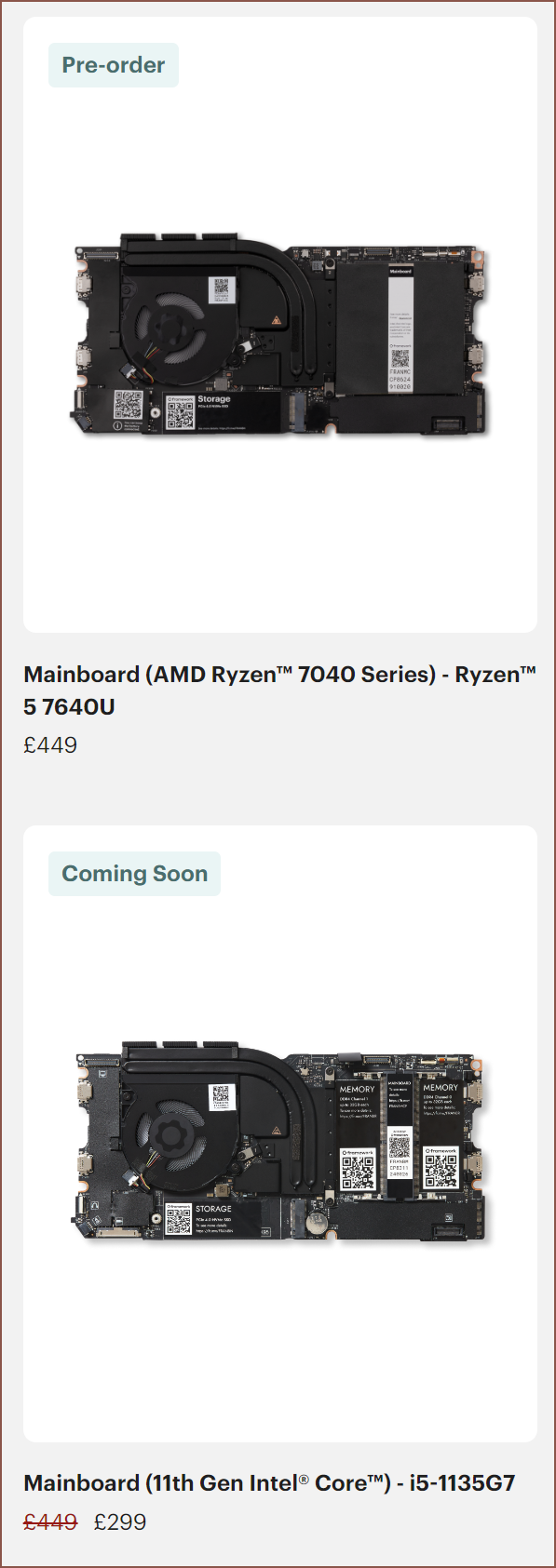
Oh wait I just got a message from the seller:
The display is rare in the market now, if you need 5pcs+, we will help you find it.
Hmmm... 2pcs maybe, since it's good to have a spare, but 5 is a bit high... there's also the BOE BO559FF2KM on Panelook, which seems like the same thing.
As for the H546DLB01.1 5.5" OLED that isn't PenTile, I was wondering why it was slightly more expensive than the £30 one I found when I was looking for screen options.
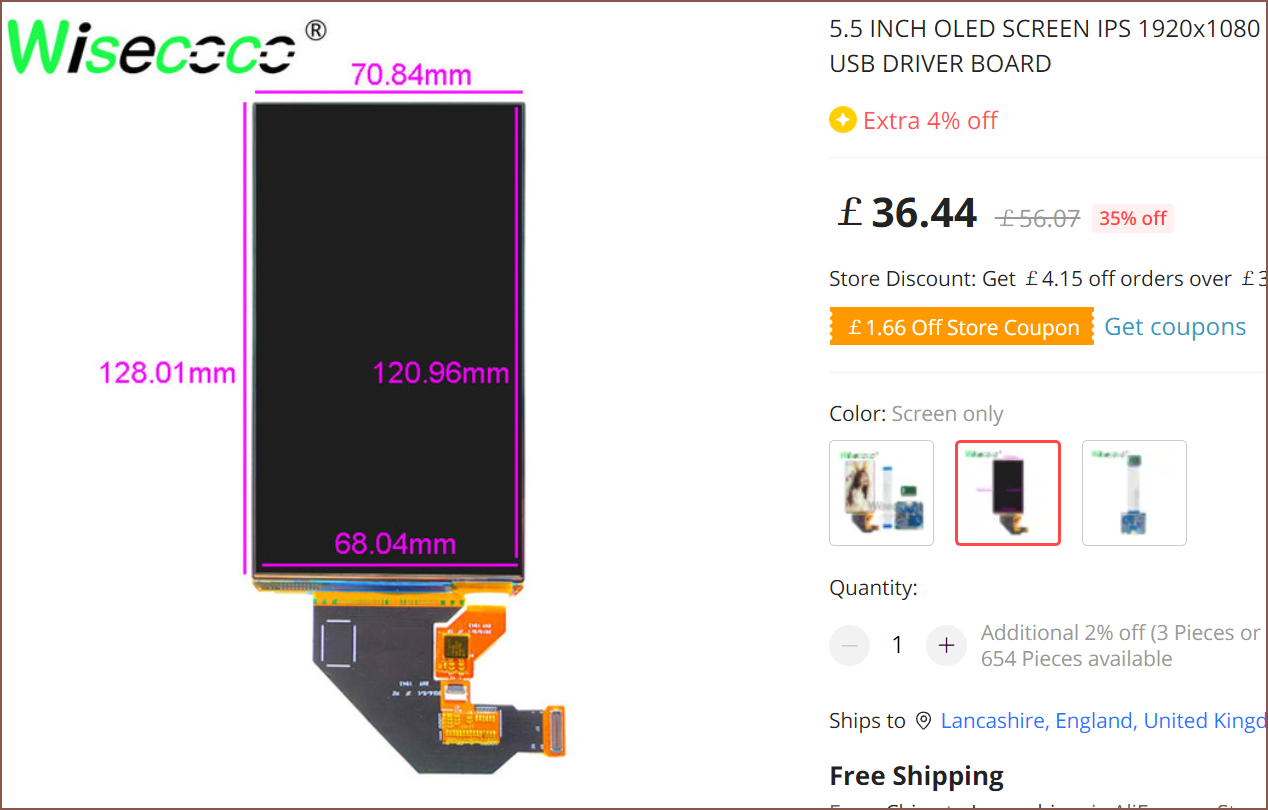
Well now I know.
Still... I'd really like that 2160x1080px edition. There's some in stock somewhere...


!!! It's those guys?!

Nohhhhh is it these ultra expensive flexible ones? Panelook doesn't mention anything to do with flexibility in its database. I think the only telltale sign was "Pixel Format: Sub-Pixel Rendering" instead of "RGB" or "PenTile" If I was spending that kind of monopoly money, I'd at least get more pixels:
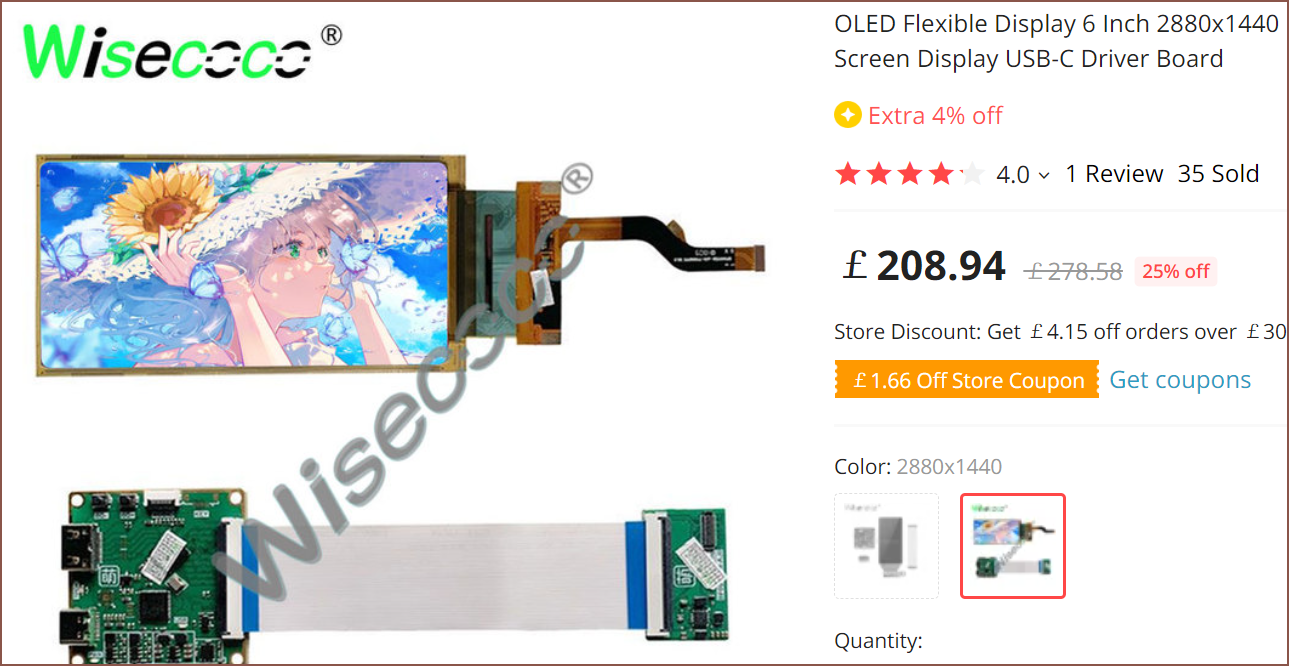
[/Edits 3 - 6]
Dual-screening, with a small-enough SBC, should mean that the smallest dimensions could be 85x270mm for 5.5" screens and 85x305mm for 6" screens.

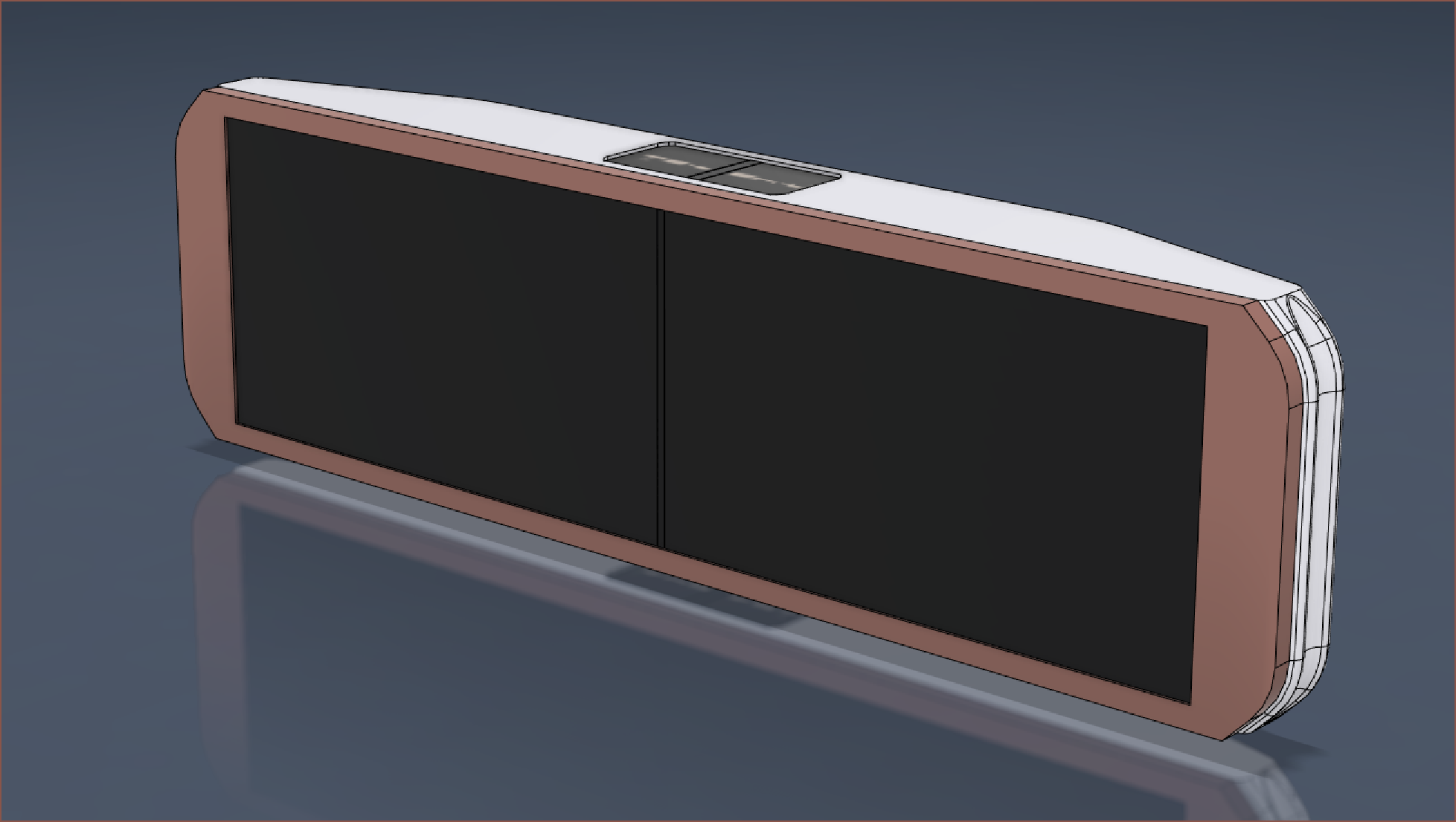
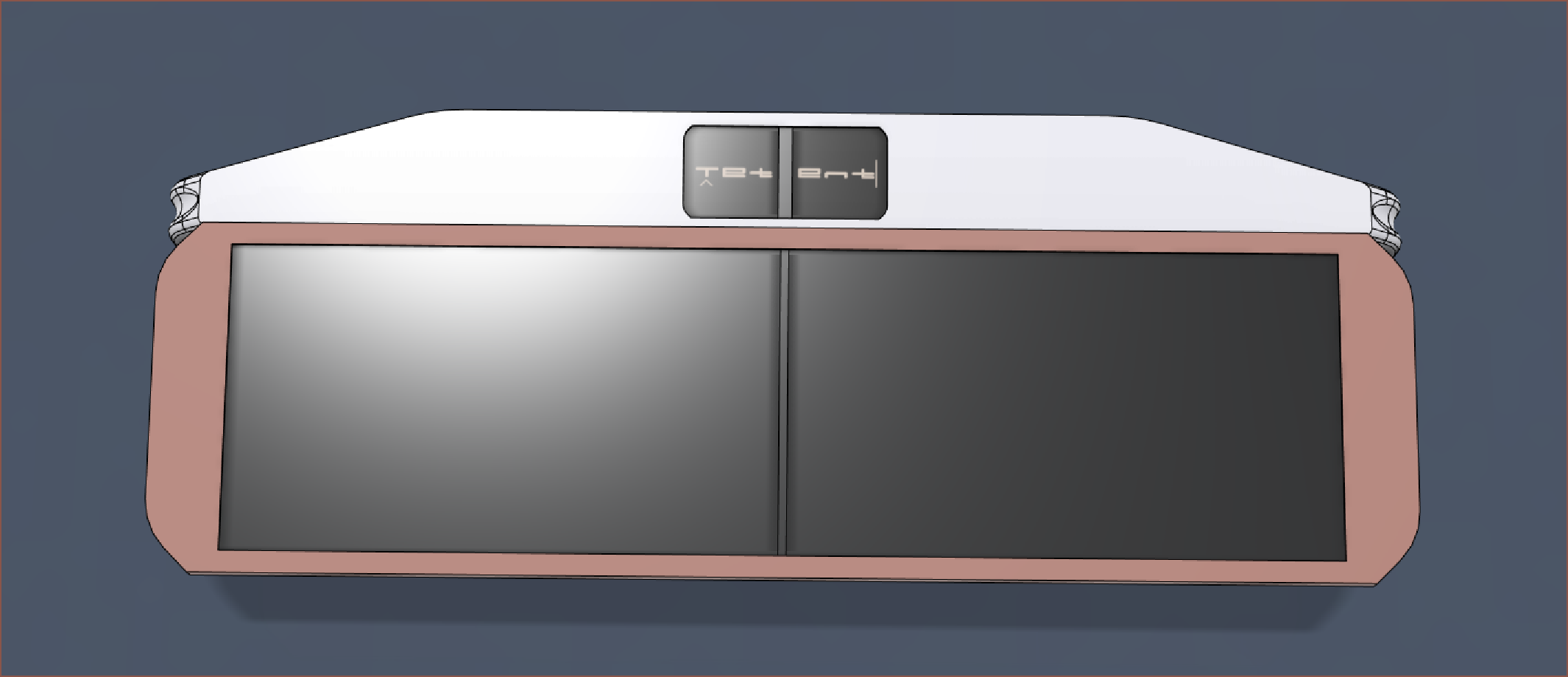
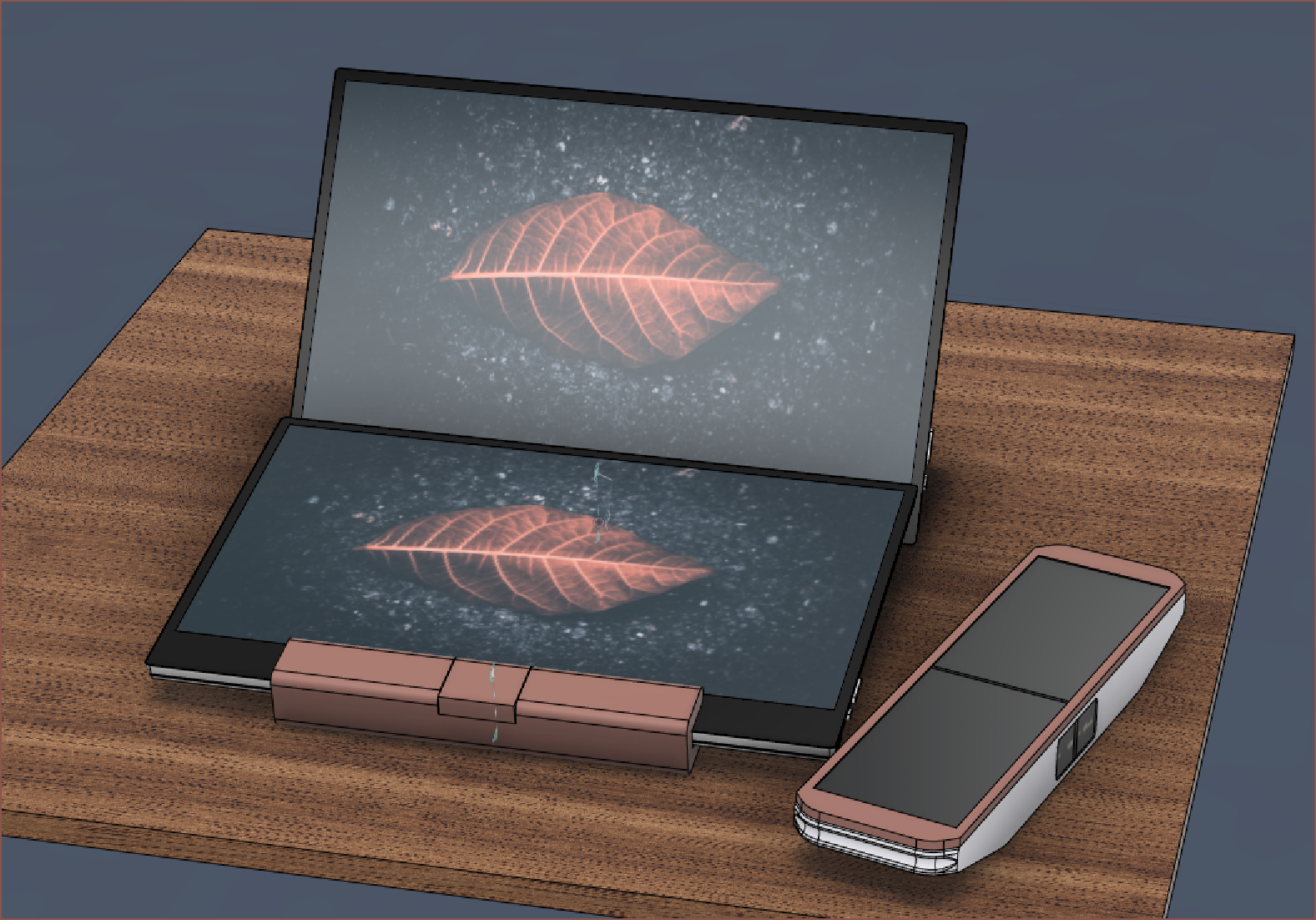
Considering the Framework mainboard size, and opting for the OLED screens, I'd assume the weight would mean that it's more comfortable to be able to rest the device on something else while still being able to type. Thus, a non-centred approach that holds Tetent high above the surface is optimal.
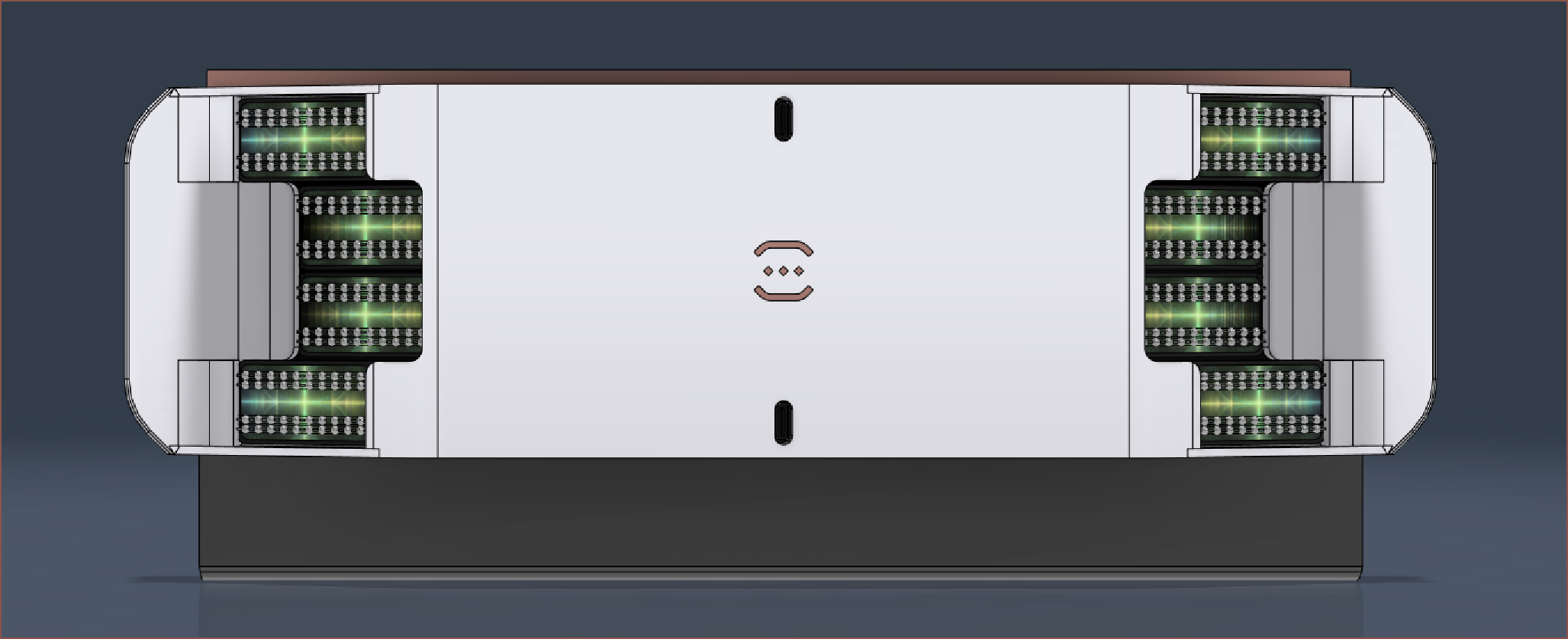

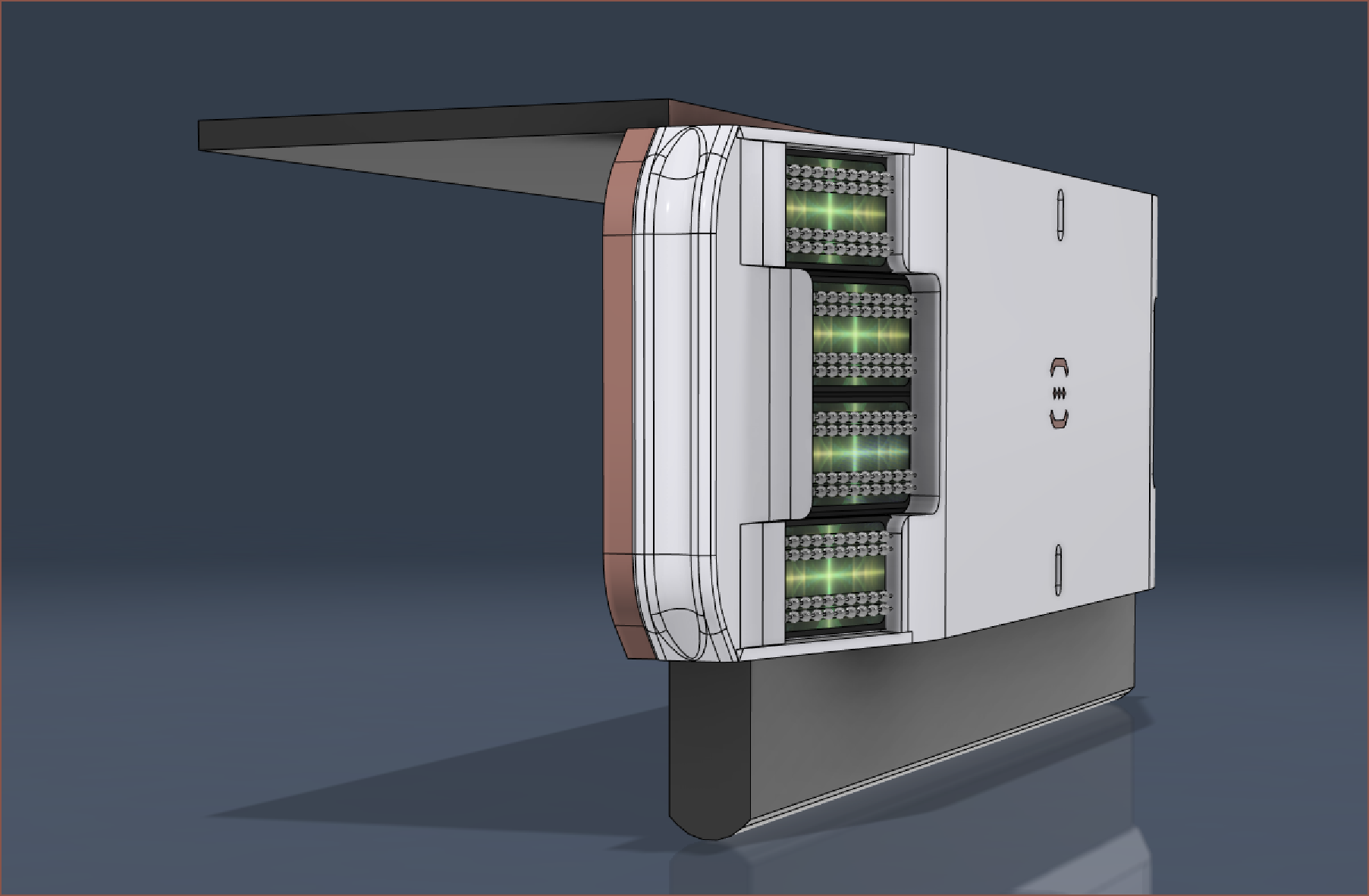
For this Framework based solution, it's likely that additional ports / (micro) SD card slot(s) would be found in that dark grey bar at the bottom, likely coming off the sides. Ideally, 2 TB4 ports will be exposed (supported by both intel and AMD) and one of the Framework USBC ports will be used for a power delivery/SD Card/Microphone hub, leaving one USBC port free for extensions.
The battery
In both cases, it's assumed that 3 x 5Ah 70x90mm cells are installed in the screen section, providing 55.5Wh of capacity (essentially the same as the stock Framework laptop). There are some 6Ah cells out there too, allowing for 66.6Wh. I was hoping that there'd be enough space for the thumbs to actually be able to use the edges of the screens, but that 15mm bezel is looking quite large when modelled. It is also assumed that the bottom reflective LCDs found in the Tetent Concept3 model are ommited.
[16 May: Edit 5]
Looking at listings, a single 357090 cell is 64g. That means that the 3cell battery would be 192g, which is slightly lighter than Framework's 217g battery with dimensions 239mm x 93mm x 6mm. However, even though this is a handheld device, I'd rather increase the weight by an additional 192g to allow the UMPC to go twice as long on a charge. An ultra-mobile PC isn't all that mobile if I'm tethered to a socket and isn't much of a PC if it has no power. The 6cell battery size will likely be about 216mm x 92mm x 7.2mm.
I'm aiming to be at or under 800g, which is the weight of one of my touchscreen portable monitors. My estimate totalled 772g, so there's hope!
 kelvinA
kelvinA
Discussions
Become a Hackaday.io Member
Create an account to leave a comment. Already have an account? Log In.